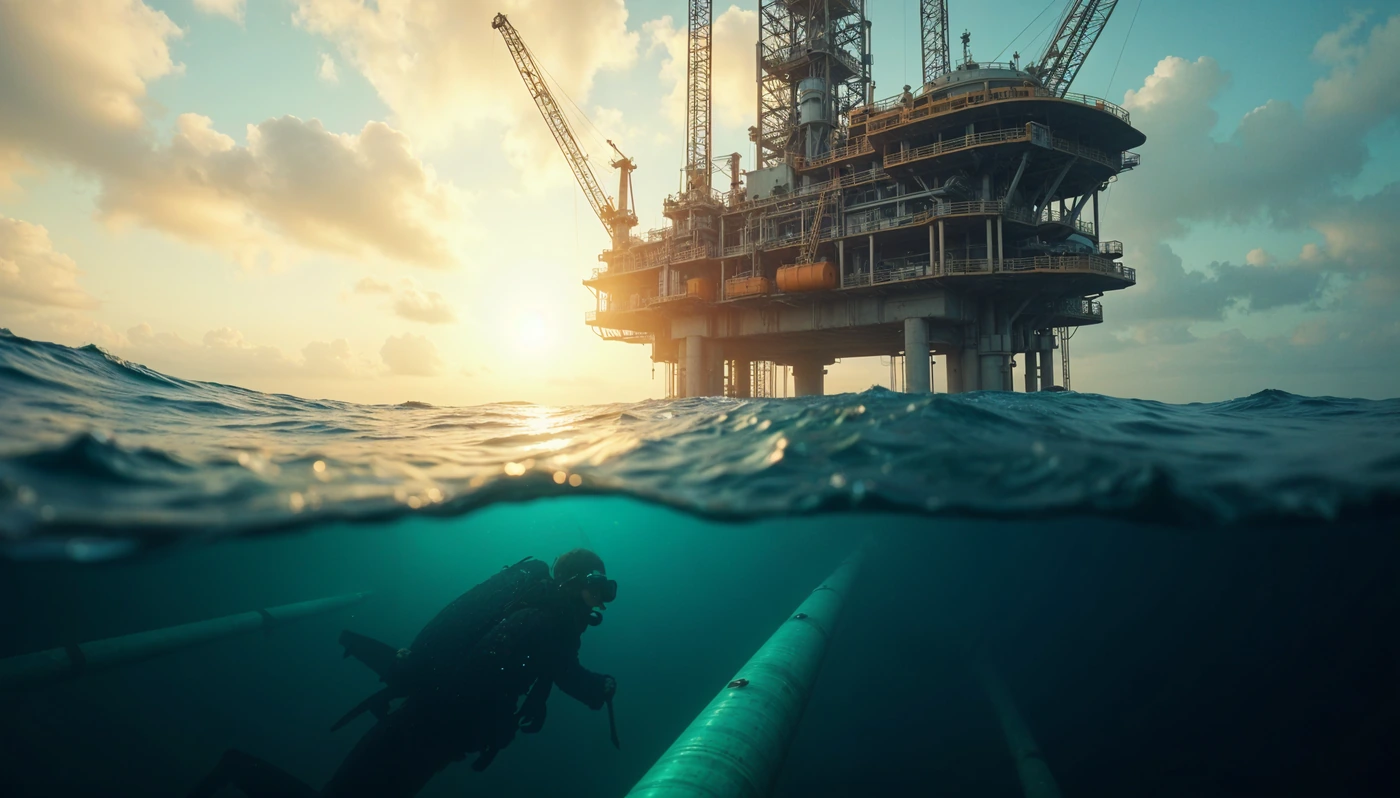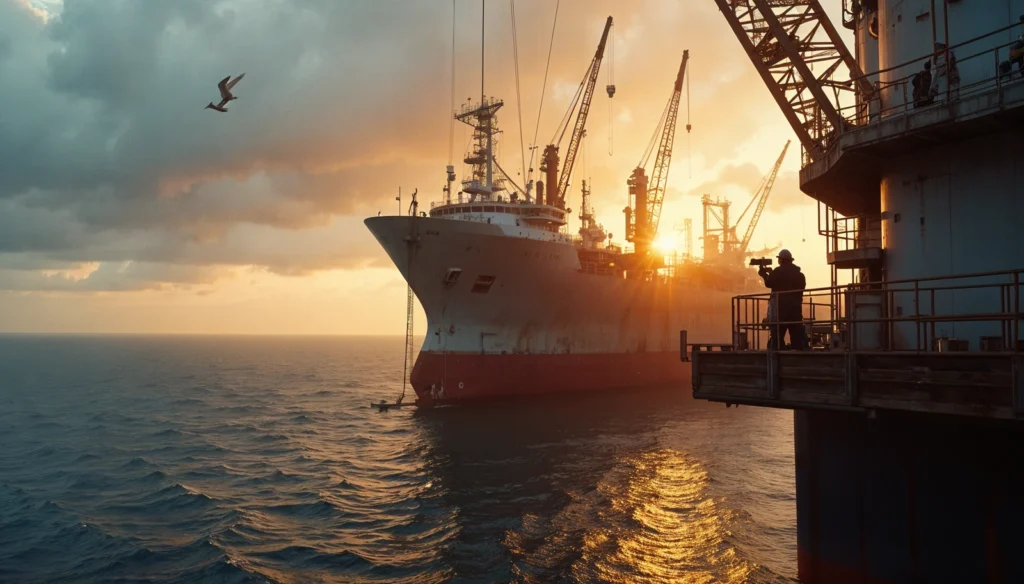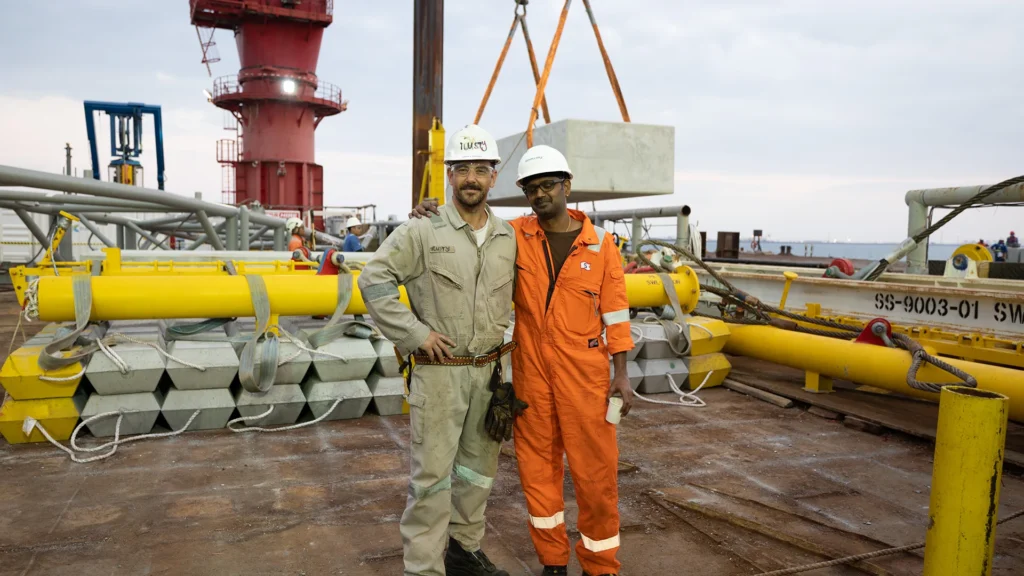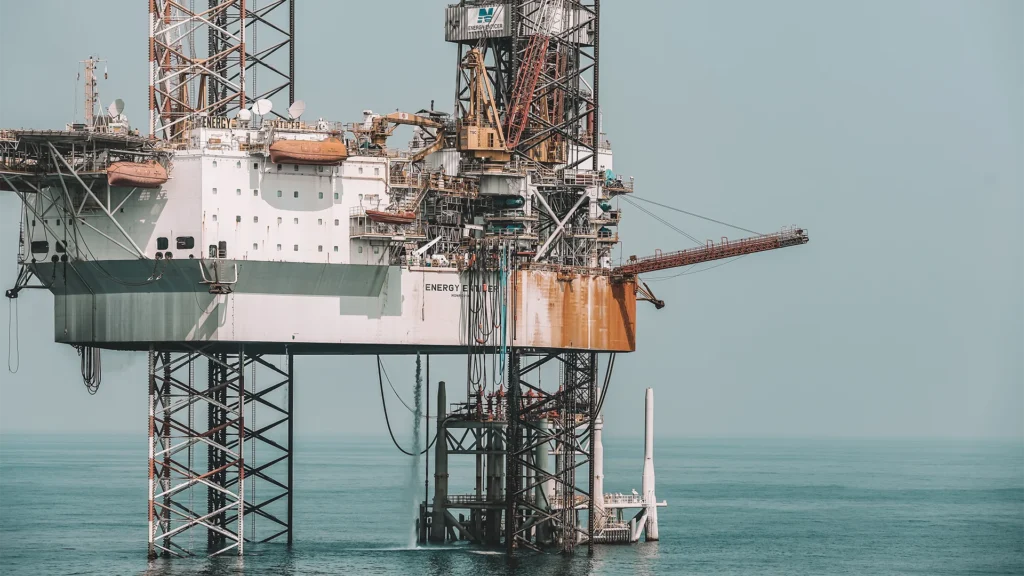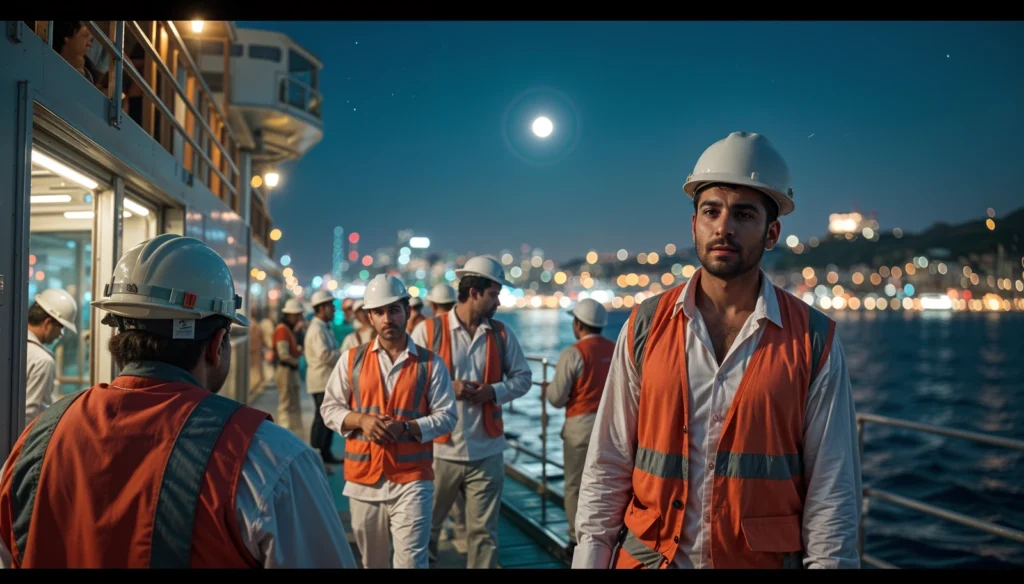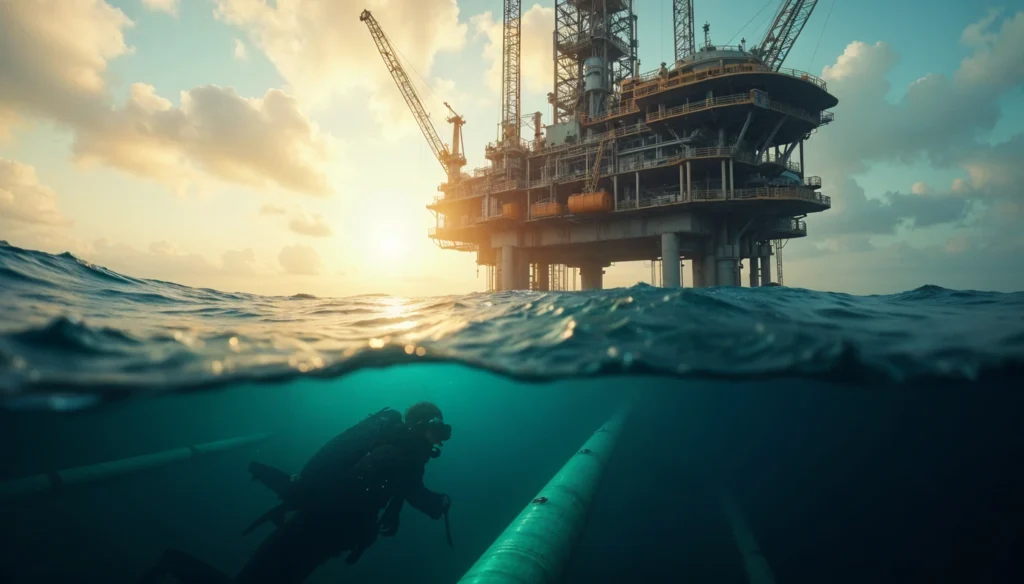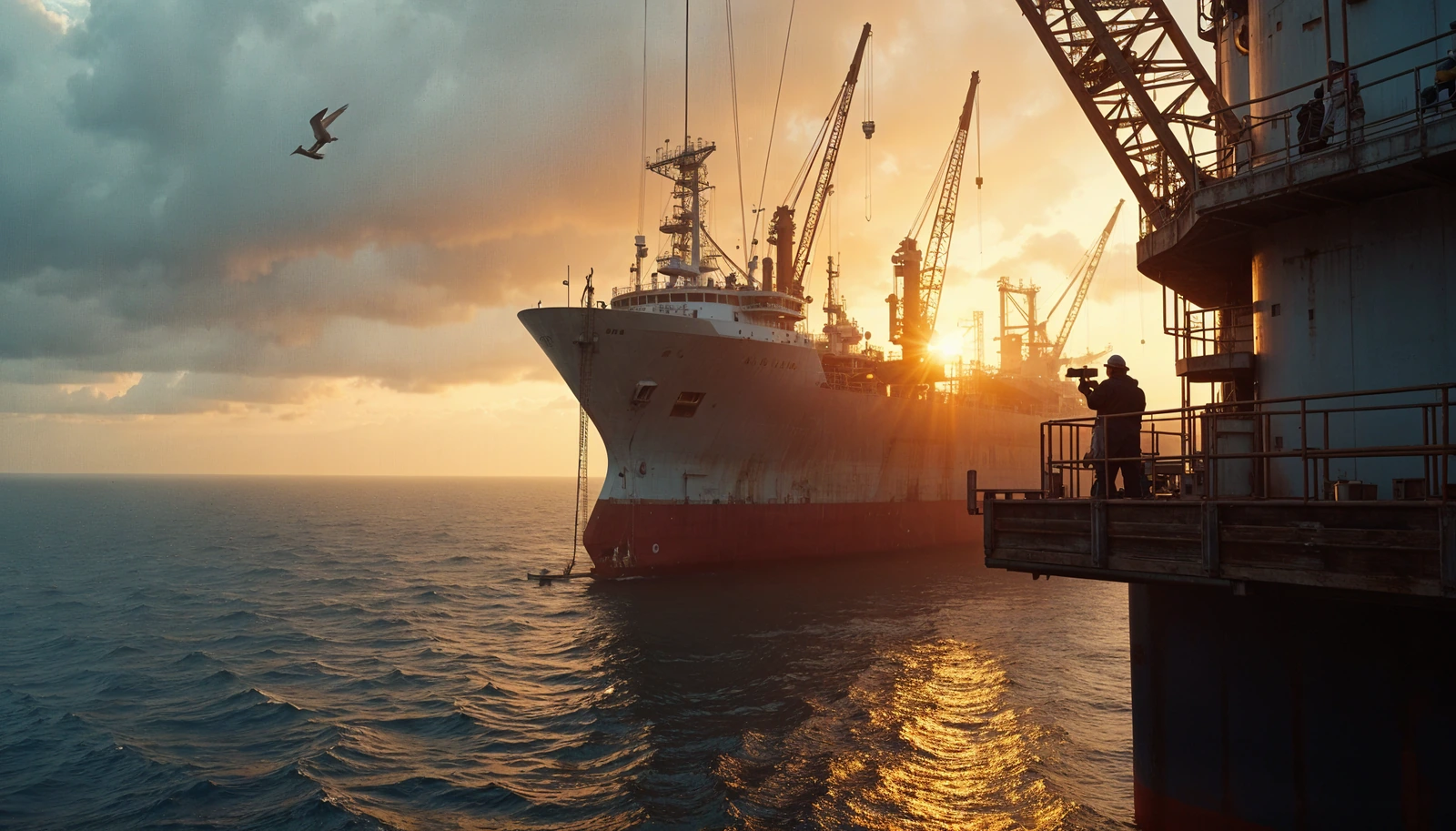There’s a strange kind of poetry in standing on a helideck suspended 30 meters above a restless sea, knowing that just beneath your boots lies a labyrinth of machinery stretching 100 meters into the depths. Offshore life is not just work — it’s a balancing act between sky and ocean, gravity and trust, solitude and teamwork. This is the rhythm of life on offshore installations — and it’s where Aurora Media has spent over two decades documenting the human and mechanical choreography behind some of the world’s most ambitious projects.
A World Within a World
Offshore platforms and construction vessels are mechanical megastructures, yet they operate like living organisms. There’s a constant hum: winches turning, cranes swinging, ROVs (remotely operated vehicles) dipping beneath the surface, and crew coordinating in multiple languages via radios and hand signals. The entire system is in motion — even when it seems still.
The human experience in this environment is equally layered. Days begin before dawn with safety briefings, followed by 12-hour shifts on deck or in the control room. Meals are shared in floating canteens, conversations drift between languages and dialects, and personal routines form quietly — a daily workout, a video call home, a late-night coffee overlooking the dark sea.
And all of this unfolds in a place that’s not really a place — it’s a dot on the map, floating miles from land, shaped by tides and wind, built to extract, install, and endure.
Media in Motion: Why We’re There
Aurora Media isn’t just there to “film.” We embed. Our role is to understand the story arc of the project and the pulse of the people behind it. Whether we’re filming the delicate descent of a subsea module or capturing a technician scaling a turbine tower in brutal wind, our focus is on preserving the scale and soul of what’s happening.
Filming offshore requires preparation on the same level as any crew member. We pass the same safety checks, wear the same gear, and stay on-site for weeks if needed. Our cameras are pressure-sealed, our drones reinforced, and our footage meticulously planned around shifting weather windows, vessel positioning, and client priorities.
It’s not unusual for us to be shooting in three environments in a single day: above deck with a gimbal-mounted Lumix, Canon or RED camera, underwater with an ROV-cam for pipeline inspection, and inside a cramped control cabin capturing the tense coordination between engineers. And yet, it all weaves together — these shots become a living document of industry at its most advanced and human.
A Legacy Beyond the Job
Why capture all this? Because what happens offshore is often invisible. The scale is too massive, the timelines too tight, the locations too isolated. But what these crews build — the turbines, the pipelines, the platforms — power cities and countries. They keep the lights on. They change landscapes.
Media creates legacy. It’s a way for companies to not only document compliance or progress, but to celebrate the people who made it possible. It also trains new generations, attracts talent, and communicates what words often cannot: that this work is bold, precise, and deeply human.
Between Sky and Sea
At 30 meters above the sea, you’re closer to the clouds than the shore. At 100 meters below, you see a darkness that only machines explore. Between these extremes lives a world of action, precision, and quiet resilience. That’s where Aurora Media thrives. And that’s where we keep telling stories — one frame at a time.

